| Product Name | Alpha Synuclein Protein | |||||||||||||||||||||||||||||||||||||||||||||||||||||||||||||||||||||||||||||||||||||||||||||||||||||||||||||||||||||
| Description |
Human Recombinant Alpha Synuclein Pre-formed Fibrils (Type 1) |
|||||||||||||||||||||||||||||||||||||||||||||||||||||||||||||||||||||||||||||||||||||||||||||||||||||||||||||||||||||
| Applications | WB, SDS-PAGE, In vivo assay, In vitro assay | |||||||||||||||||||||||||||||||||||||||||||||||||||||||||||||||||||||||||||||||||||||||||||||||||||||||||||||||||||||
| Concentration | 2 mg/ml or 5 mg/ml | |||||||||||||||||||||||||||||||||||||||||||||||||||||||||||||||||||||||||||||||||||||||||||||||||||||||||||||||||||||
| Conjugates |
No tag
StreptavidinProperties:
Biotin
|
|||||||||||||||||||||||||||||||||||||||||||||||||||||||||||||||||||||||||||||||||||||||||||||||||||||||||||||||||||||
| R-PE (R-Phycoerythrin) | ||
| Overview: |  |
Optical Properties:
λex = 565 nm λem = 575 nm εmax = 2.0×106 Φf = 0.84 Brightness = 1.68 x 103 Laser = 488 to 561 nm Filter set = TRITC |
Properties
| Storage Buffer | PBS |
| Storage Temperature | -80ºC |
| Shipping Temperature | Dry Ice. Shipping note: Product will be shipped separately from other products purchased in the same order. |
| Purification | Ion-exchange Purified |
| Cite This Product | Human Recombinant Alpha Synuclein Protein (StressMarq Biosciences, Canada, Cat # SPR-322) |
| Certificate of Analysis | Certified >95% pure using SDS-PAGE analysis. Low endotoxin <5 EU/mL @ 2mg/mL. |
| Other Relevant Information | For best results, sonicate immediately prior to use. Refer to the Neurodegenerative Protein Handling Instructions on our website, or the product datasheet for further information. Monomer source is catalog# SPR-321. |
Biological Description
| Alternative Names | Alpha synuclein PFFs, Alpha synuclein aggregates, Alpha synuclein PFF, Alpha synuclein protein aggregates, Alpha synuclein aggregates, Alpha-synuclein protein, Non-A beta component of AD amyloid protein, Non-A4 component of amyloid precursor protein, NACP protein, SNCA protein, NACP protein, PARK1 protein, SYN protein, Parkinson's disease familial 1 Protein, Alpha synuclein protein seed |
| Research Areas | Alzheimer's Disease, Neurodegeneration, Neuroscience, Parkinson's Disease, Synuclein, Tangles & Tau, Multiple System Atrophy |
| Cellular Localization | Cytoplasm, Membrane, Nucleus |
| Accession Number | NP_000336.1 |
| Gene ID | 6622 |
| Swiss Prot | P37840 |
| Scientific Background | Alpha-Synuclein (SNCA) is expressed predominantly in the brain, where it is concentrated in presynaptic nerve terminals (1). Alpha-synuclein is highly expressed in the mitochondria of the olfactory bulb, hippocampus, striatum and thalamus (2). Functionally, it has been shown to significantly interact with tubulin (3), and may serve as a potential microtubule-associated protein. It has also been found to be essential for normal development of the cognitive functions; inactivation may lead to impaired spatial learning and working memory (4). SNCA fibrillar aggregates represent the major non A-beta component of Alzheimers disease amyloid plaque, and a major component of Lewy body inclusions, and Parkinson's disease. Parkinson's disease (PD) is a common neurodegenerative disorder characterized by the progressive accumulation in selected neurons of protein inclusions containing alpha-synuclein and ubiquitin (5, 6). |
| References |
1. “Genetics Home Reference: SNCA”. US National Library of Medicine. (2013). 2. Zhang L., et al. (2008) Brain Res. 1244: 40-52. 3. Alim M.A., et al. (2002) J Biol Chem. 277(3): 2112-2117. 4. Kokhan V.S., Afanasyeva M.A., Van'kin G. (2012) Behav. Brain. Res. 231(1): 226-230. 5. Spillantini M.G., et al. (1997) Nature. 388(6645): 839-840. 6. Mezey E., et al. (1998) Nat Med. 4(7): 755-757. |
Product Images
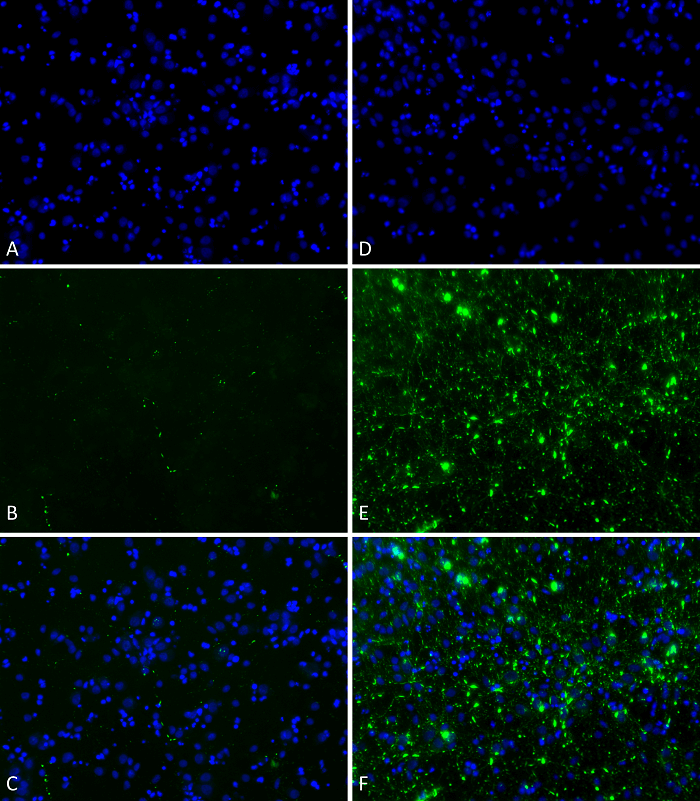
Primary rat hippocampal neurons show lewy body inclusion formation when treated with Type 1 Alpha Synuclein Protein Pre-formed Fibrils (SPR-322) at 4 µg/ml (D-F), but not when treated with Type 2 Alpha Synuclein Protein Pre-formed Fibrils (SPR-317) at 4 µg/ml (A-C). Tissue: Primary hippocampal neurons. Species: Sprague-Dawley rat. Fixation: 4% formaldehyde from PFA. Primary Antibody: Mouse anti-pSer129 Antibody at 1:1000 24 hours at 4°C. Secondary Antibody: FITC Goat Anti-Mouse (green) at 1:700 for 1 hours at RT. Counterstain: Hoechst (blue) nuclear stain at 1:4000 for 1 hour at RT. Localization: Lewy body inclusions. Magnification: 20x.
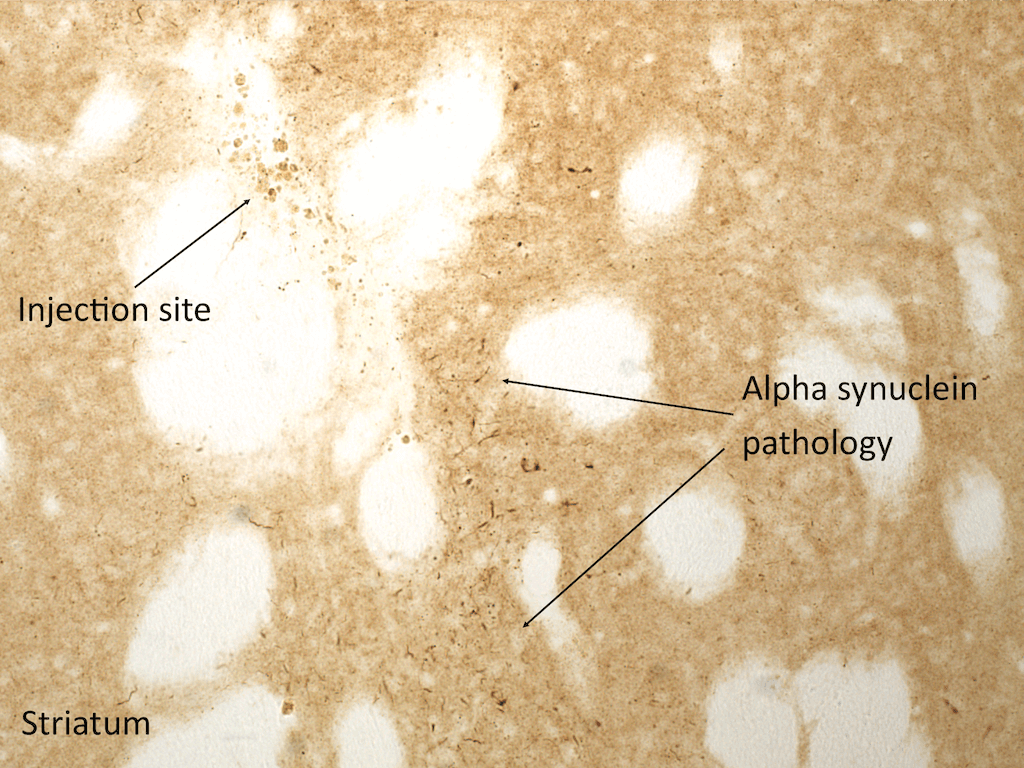
Immunohistochemistry analysis of rat brain injected with Type 1 human alpha synuclein PFFs (SPR-322). Species: Female Sprague-Dawley Rat. Rat was injected with 16µg Type 1 human alpha synuclein PFFs (SPR-322) in each of 2 injection sites: AP+1.6, ML+2.4, DV-4.2 from skull; and AP-1.4, ML+0.2, DV-2.8 from skull. 30-days post-injection. Fixation: Saline perfusion followed by 4% PFA fixation for 48 hrs. Primary antibody: rabbit monoclonal anti-pSer129 alpha synuclein. Secondary Antibody: Biotin-SP Donkey Anti-Rabbit IgG (H+L) at 1:500 for 2 hours in cold room with shaking. ABC signal amplification, DAB staining. Magnification: 20X. Alpha synuclein pathology is seen in the striatum close to an injection site.
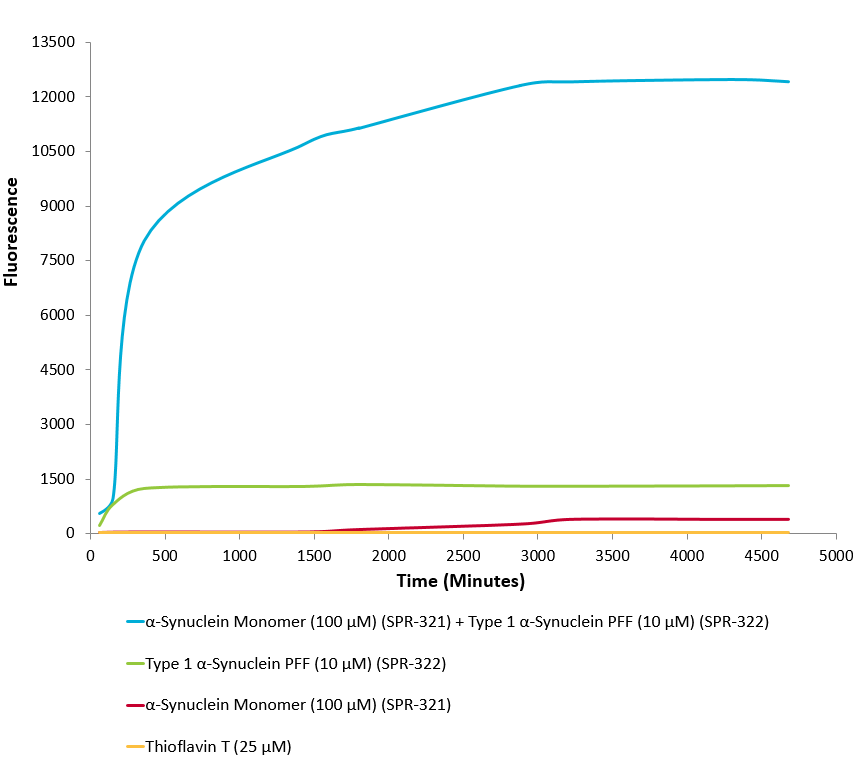
Type 1 alpha synuclein Pre-formed Fibrils (SPR-322) seed the formation of new alpha synuclein fibrils from the pool of alpha synuclein monomers (SPR-321). Thioflavin T is a fluorescent dye that binds to beta sheet-rich structures, such as those in alpha synuclein fibrils. Upon binding, the emission spectrum of the dye experiences a red-shift, and increased fluorescence intensity. Thioflavin T emission curves show increased fluorescence (correlated to alpha synuclein protein aggregation) over time when 10 µM of Type 1 alpha synuclein Pre-formed Fibrils (SPR-322) is combined with 100 µM of alpha synuclein monomer (SPR-321), as compared to Type 1 alpha synuclein Pre-formed Fibrils (SPR-322) alone and alpha synuclein monomer (SPR-321) alone. Thioflavin T ex = 450 nm, em = 485 nm.
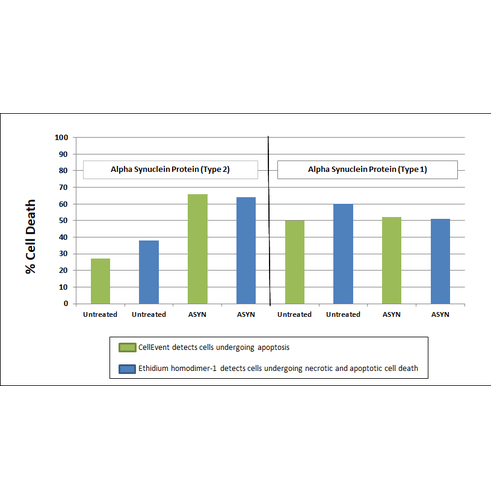
Toxicity results comparing Active Human Recombinant Alpha Synuclein Pre-formed Fibrils (Type 2) (Catalog No. SPR-317) and Active Human Recombinant Alpha Synuclein Pre-formed Fibrils (Type 1) (Catalog No. SPR-322). Data was graphed after live cell imaging results were obtained using the following procedure: After 8 days in vitro, primary rat mixed cortical neuron cells were washed with 1X PBS and treated with 500 µg/ml of Type 1 and Type 2 Alpha Synuclein Proteins for 20 hours at 37˚C. Following treatements, cells were washed with 2X PBS and incubated with a staining solution (2.0 µM Cell Event + 2.5 µM Ethidium homodimer + 2.5 µg/ml Hoechst 33342 in sterile HBSS) for 30 minutes at 37˚C. The addition of the Type 2 Alpha Synuclein Proteins resulted in a significant increase in cell death.
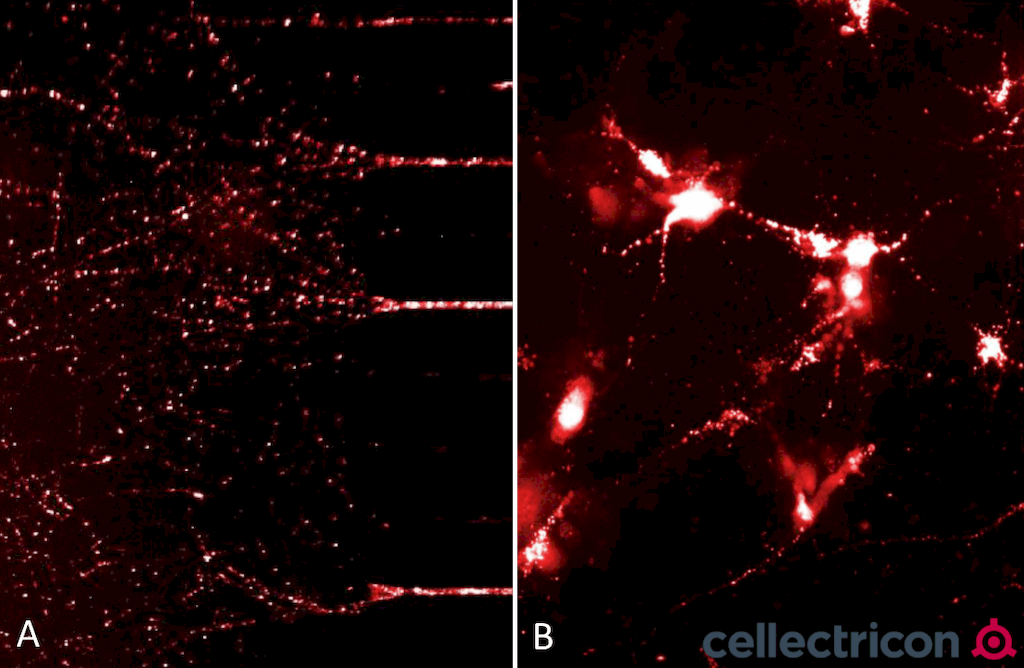
ATTO633 fluorescently-labelled alpha synuclein PFFs (SPR-322) were taken up, transported into the soma, and induced alpha synuclein aggregation in mouse neurocortical primary cells. (A) Neurites filled with fluorescently-labelled alpha synuclein seeds in a microfluidic co-culture system after 24 hours. (B) Alpha synuclein seeds within the soma and neurites of mouse neurocortical primary cells after 24 hours. Experiment and imaging courtesy of Cellectricon.
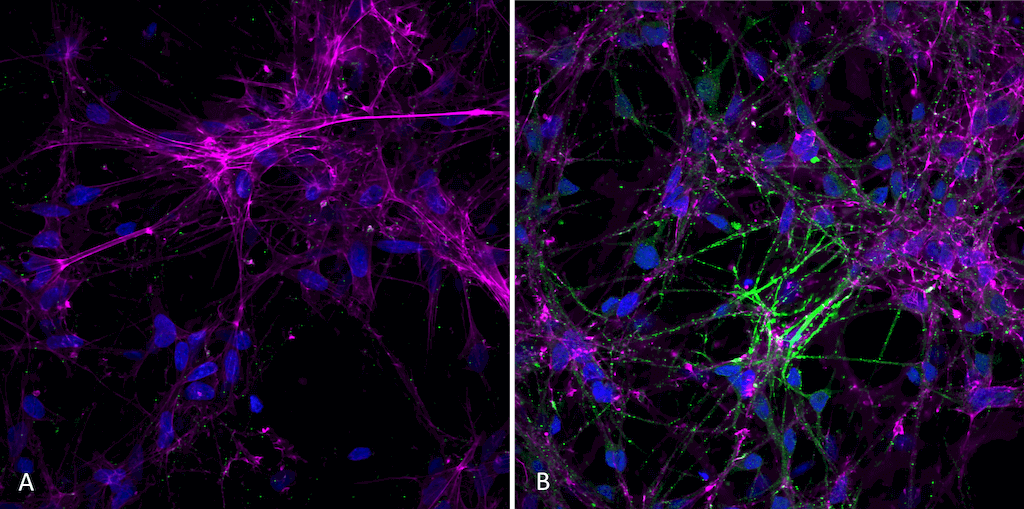
Immunocytochemistry/Immunofluorescence analysis of human iPSC-derived neurons treated with alpha synuclein pre-formed fibrils (SPR-322). Primary Antibody: Mouse Anti-Alpha Synuclein (pSer129) Monoclonal Antibody (SMC-600) at 1:1000 for O/N at 4°C. Secondary Antibody: Anti-Rabbit: A488 at 1:1000 for 1 hour at RT. Magnification: 40X. Nuclear stain: Hoechst- 20 min, RT (blue). Actin stain: Phalloidin-647- 20 min, RT (magenta). 4K cells per well. iPSC neurons: Applied StemCell Catalog # ASE-9321K. A) negative control; no fibrils added to well. B) 7 days after addition of active recombinant human pre-formed fibrils (Type 1). Fibrils were sonicated before use and applied 2.5 ug per well
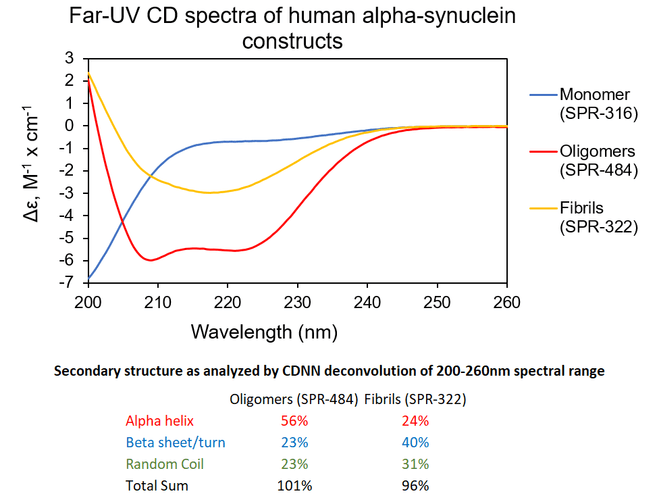
Αlpha Synuclein Oligomers Have Distinct Secondary Structure Differences Compared to Fibrils. UV-CD data suggests that StressMarq’s Alpha Synuclein Oligomers have distinct secondary structure differences compared to our monomers and fibrils. More specifically, StressMarq’s Kinetically Stable Alpha Synuclein Oligomers (SPR-484) show a significantly higher alpha helix content and lower beta sheet/turn content than our Alpha Synuclein Pre-formed Fibrils (Type 1) (SPR-322). StressMarq’s Alpha Synuclein Monomers (SPR-316) show a strong negative signal at 200 nm indicative of a disordered protein state (low secondary structure content).
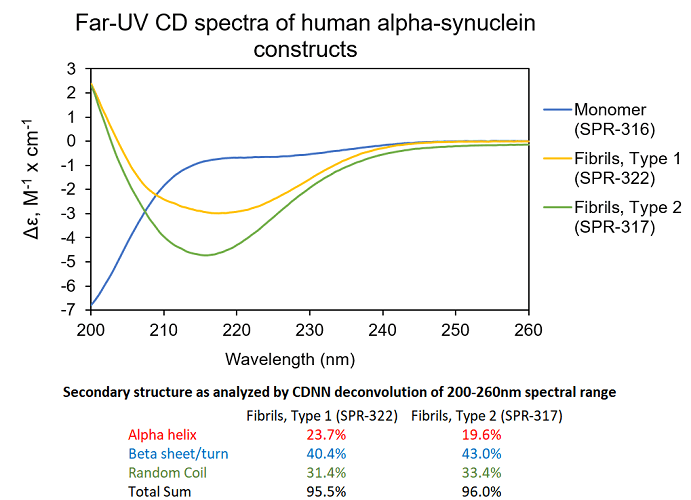
UV-CD data suggests StressMarq’s Alpha Synuclein Pre-formed Fibrils (PFF), Type 1 (cat#SPR-322) and Type 2 (cat#SPR-317) both have a high beta sheet/turn content, yet do have small secondary structure differences. StressMarq’s Alpha Synuclein Monomers (cat#SPR-316) show a strong negative signal at 200 nm indicative of a disordered protein state (low secondary structure content). For this experiment, pre-formed fibrils (PFF) were subjected to 10 cycles of sonication prior to UV-CD to ensure solubility prior to measurement.

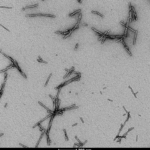
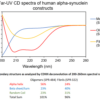
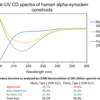
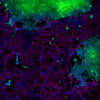
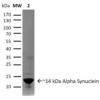
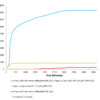
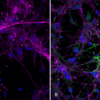
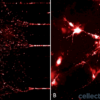
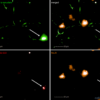
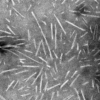
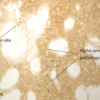
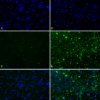
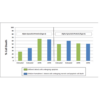



















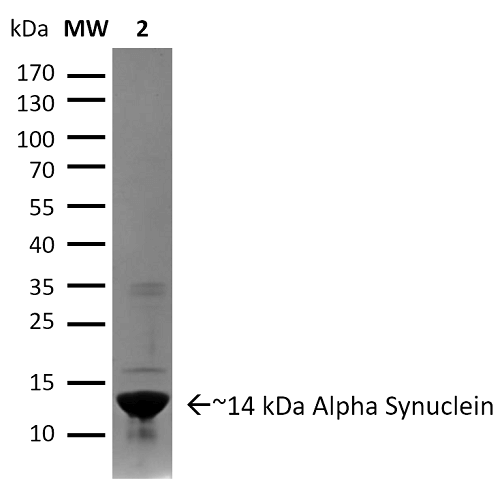
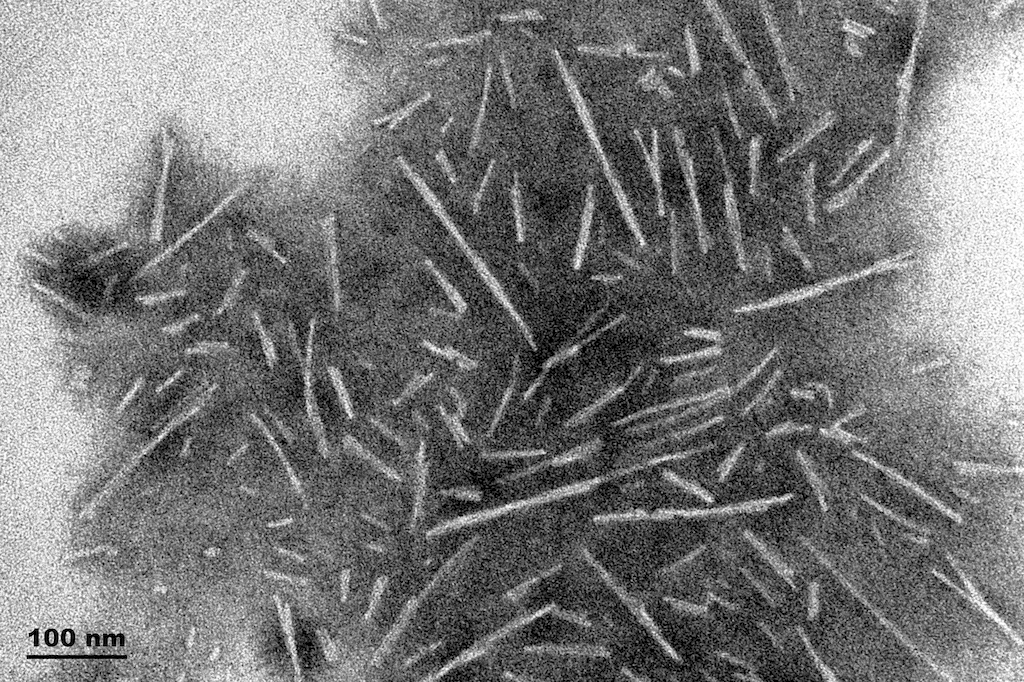
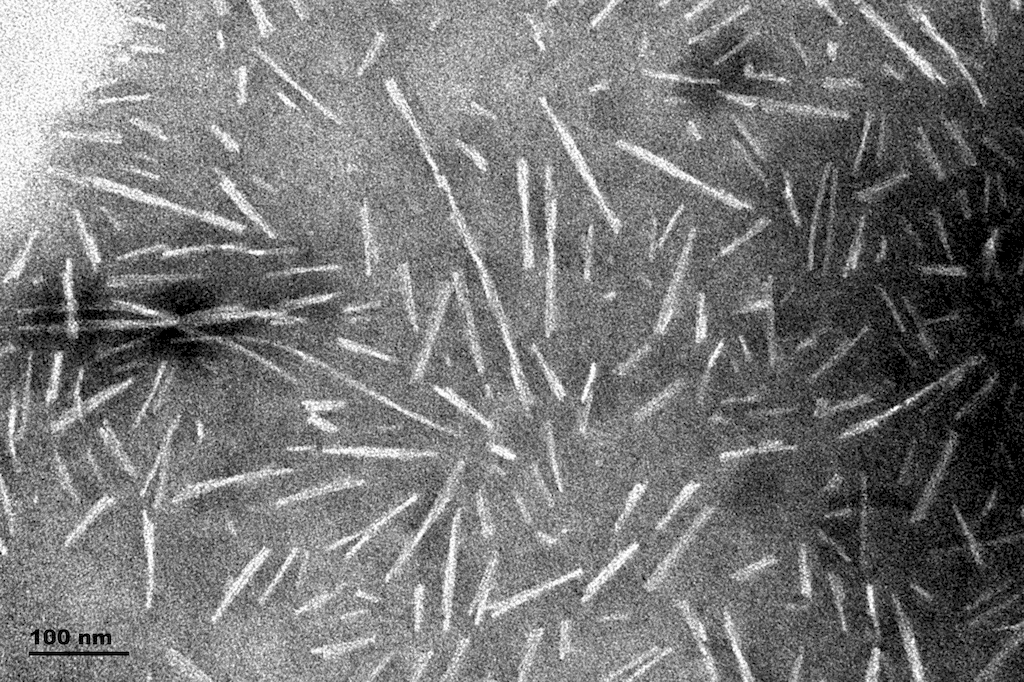
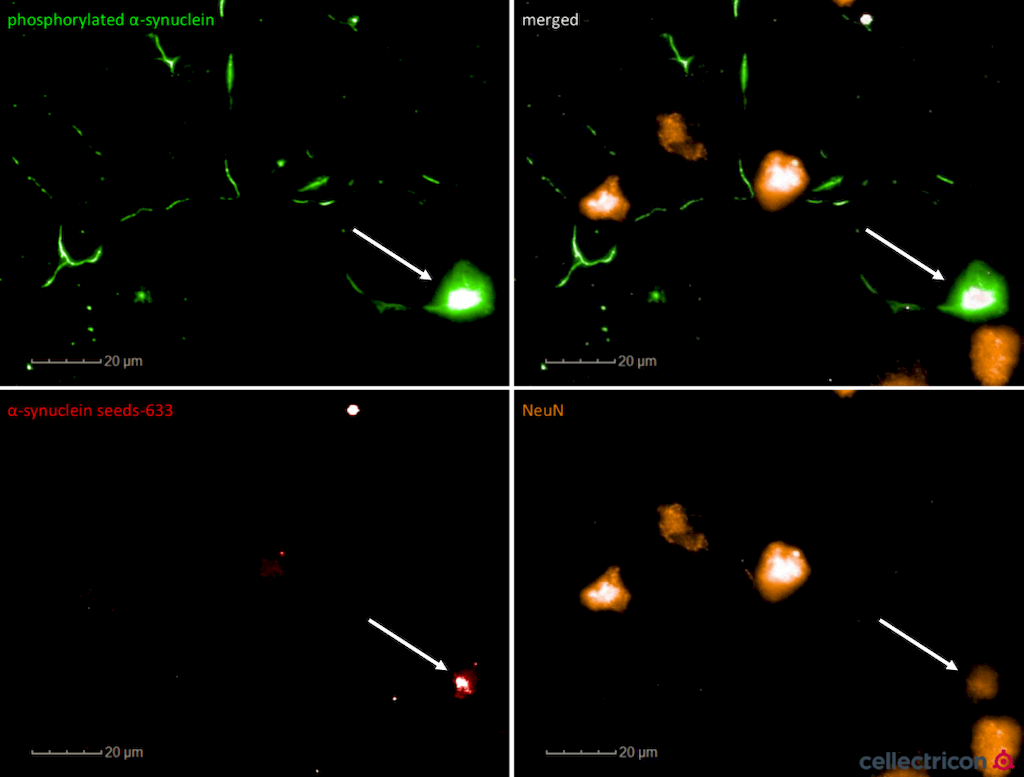
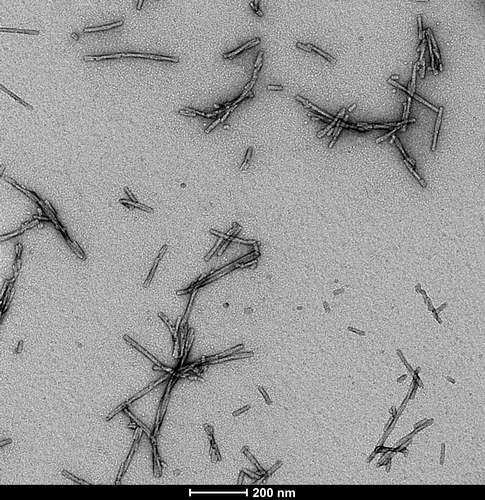
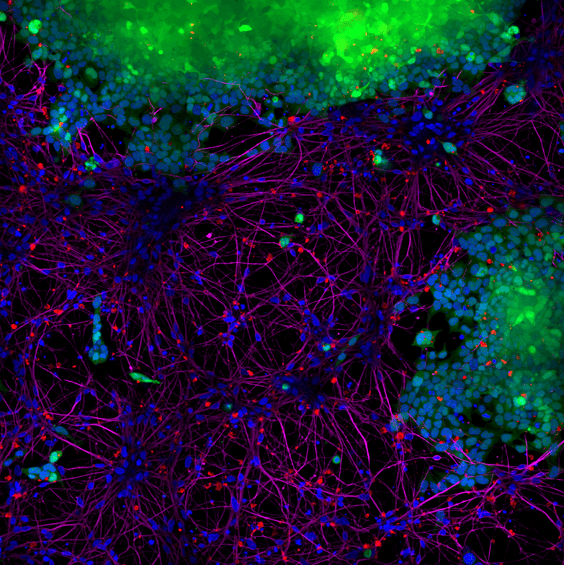
StressMarq Biosciences :
Based on validation through cited publications.